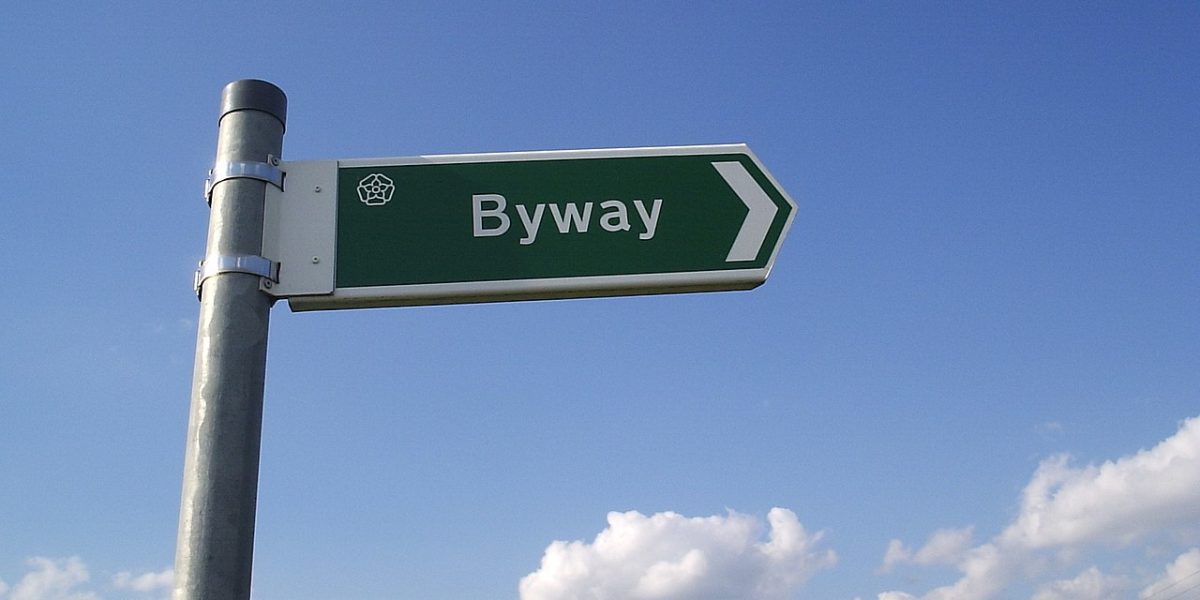
Finch Lane, Hertfordshire Traffic Regulation Order
Finch Lane is an urban road in Hertfordshire. The road is tarmac and has a pavement. A TRO was made in 1973 to stop the urban road being used by public motor vehicles as a rat run. Around the same time the pavement was extended to better provide for children walking to the nearby school.
Members of the public made two applications in 1995 to record the urban tarmac road and pavement as BOAT. The applications were made with good intentions.
Hertfordshire County Council considered the BOAT applications in 2018 and decided not to make a BOAT order. Hertfordshire County Council reasoned that the urban tarmac road and pavement was an ordinary road, rather than a BOAT. The applicants appealed to the Secretary of State against Hertfordshire County Councils refusal to make a BOAT order. An inspector considered the appeal and, despite TRF’s representations, directed Hertfordshire County Council to make a BOAT order.
The definition of a BOAT is provided by statute – section 66 of the Wildlife and Countryside Act 1981:
“byway open to all traffic” means a highway over which the public have a right of way for vehicular and all other kinds of traffic, but which is used by the public mainly for the purpose for which footpaths and bridleways are so used
Hertfordshire County Council have made the BOAT order as directed, and the order indicates that there is a right of way for vehicular and all other kinds of traffic along the pavement. The pavement is not a footpath in law, but a footway – a particular type of highway that only exists in relation to a made-up carriageway, and which has a public right of way on foot only. The definition of BOAT is incompatible with the definition of footway.
TRF objected to the BOAT order and the matter was referred to the Secretary of State.
The matter is now being considered by an inspector and TRF has made written submissions.
The case is of interest to TRF because it concerns the scope of the definitive map legislation and whether ordinary urban tarmac roads and pavements can be downgraded to BOAT (or worse). The case has wider public interest because so much of the ordinary urban tarmac road network is being converted into private drives by low traffic neighbourhood schemes, TRO’s, and worse. With the likelihood of a 2030 cut off to claim pre-1949 paths because of the Countryside and Rights of Way Act 2000 (CROW), the extension of definitive map legislation to ordinary tarmac roads and footways carries an increased risk of extinguishing public rights over ordinary roads that are under-recorded on the definitive map as restricted byway or path.
Beyond that, allowing the ordinary tarmac road network and pavements to be downgraded to BOAT would open the floodgates to record swathes of ordinary road as BOAT – further crippling the broken definitive map system that has so poorly served the public interest for 70+ years.
NERC has had unintended consequences of converting ordinary public roads into private drives (see e.g. the St Mawgan case ). The extension of definitive map legislation, working in conjunction with 2030 cut off for paths (effectively NERC for non-motorised users) will deliver similar horrors. The key to damage limitation for both NERC and CROW is to keep public carriageways as far as is possible from the definitive map.
Success in Finch Lane will enable authorities to better unclog the broken definitive map system by binning off the claims affecting ordinary roads – especially those with pavements.
The public does not need a definitive map to tell it that an urban tarmac road with pavement, white lines, street lights, street name signs, and traffic signs, is good to use as a public road and pavement. The public didn’t need that when the definitive map was introduced in the 1950’s, and still doesn’t need it in 2023 in the age of sat-nav and smartphones. The public no longer needs the definitive map for any green roads in 2023 and there are only very rare and exceptional circumstances in which it may be beneficial to record a green road as BOAT.
Any member of the public need go no further than London, Scotland or France to find proof that the definitive map and statement is redundant and has served the public poorly in comparison to public access that does not suffer from definitive map legislation.
A minority of private interests do need the definitive map legislation, because the scheme has always been vulnerable to use as a tool to deny public access – and has been systematically used to do that since its introduction. It’s telling that the system to correct the definitive map (so as to accurately record public access) is broken, yet the accompanying system to deny public access (depositing maps to show non-existence of public access) is incredibly efficient, well resourced and maintained.




